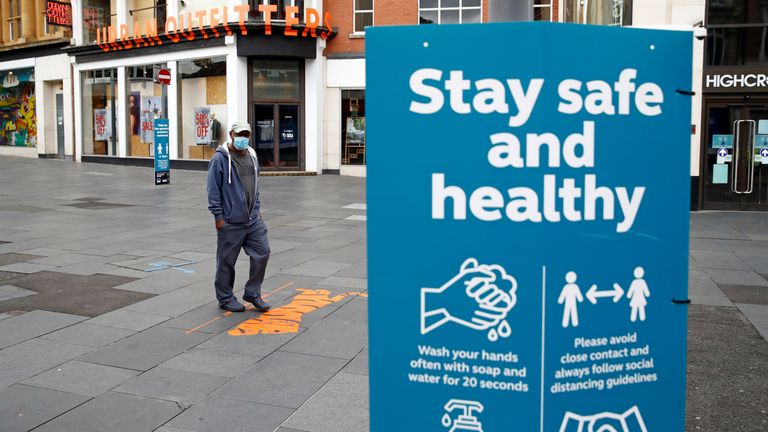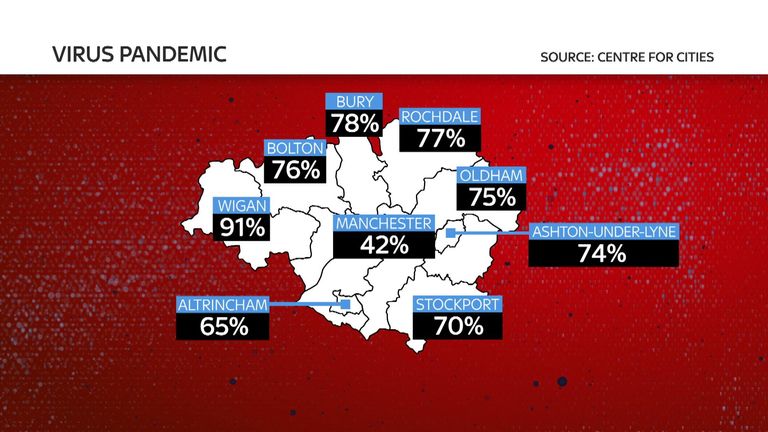The first week of September is when many Britons traditionally swap the holidays for hard grind.
Not this year. While many of us are back at work after the holidays most of us are not going back to work.
For those fortunate enough to be able to work from home – around 40% of the working population – the turn of the month brought no seasonal rush back to city offices as the effects of the coronavirus crisis continued to evolve.
Boris Johnson, speaking with typical vim and an equally characteristic lack of evidence, told his Cabinet that workers were returning “in huge numbers”, a claim not borne out on the transport network or in major city centres.
Commuter lines across the country remained sparsely used and major stations from Victoria in London to Piccadilly in Manchester saw a fraction of their usual passenger numbers.
Anecdotally those cities do appear a little busier this week than early in August.
Transport for London reported an 8% increase in tube journeys ‘tapped in’ with payment cards than a week ago.
Lest anyone gets carried away that’s still 72% down on a year ago, evidence of a city centre still locked in economic crisis rather than returned to health.
In Manchester, where I spent the day, there are some promising signs. Younger workers in particular were visible in city centre offices in the Spinningfield business district.
WeWork shared offices that were desolate a month ago have a trickle of returning companies, and commercial property owners are hopeful the return of children to school will unlock demand for their parents to get back to work.
Rob Yates, managing director of All+ Property, which manages space for 6,000 in various buildings in Spinningfield, said this is a crucial moment.
“I think this is an absolutely critical week. The biggest single factor is return to schools that will see parents and the workforce seeing their kids go back to school.
“That should reassure them that they then can come back to the workplace.
“I think it will be a phased uptake, people will maybe come in for two or three days a week and then hopefully, by the end of the month, we’ll see a real spike of uptake in people coming into the office.”
There is a long way to go if that is to happen. Cities like Manchester have been turned inside out by COVID-19, the centres deserted after people were ordered to work from home, placing thousands of jobs in support services at risk and shifting economic activity shifting to the suburbs.
This change is borne out by phone data compiled for Sky News by the Centre for Cities. It shows worker footfall in Manchester city centre in August was 86% down on pre-lockdown levels.
Total footfall, including weekends and evenings, was better at 42%, but every other borough in Greater Manchester, home to hundreds of thousands of workers, has recovered at least 65% of its pre-lockdown activity, with Wigan back to 91%.
Startled by the deadzones at the heart of our richest cities the Prime Minister sounds desperate to prize workers from their homes, but so far he has been ignored.
It is now six weeks since he first urged people to return and a month since the work-from-home advice was dropped in England and still white collar workers are stubbornly working from home.
One major reason is that many of them prefer it. They may miss their colleagues but they do not miss the commute.
Having been gifted an extra two or three hours a day they have given half to their employers and the other half to novel activities like seeing their children.
Working from home is unquestionably easier for older, richer workers blessed with space at home, experience at work and social capital to help navigate the challenges of distance.
Younger staff are more likely to require instruction and mentoring, and to provide the social energy that invests city centres with the buzz that makes them attractive s after-hours destinations.
But even they are loath to trade home for a decrepit and expensive transport system.
“I’ve got a better work life balance, not having to wait for delayed or cancelled Northern Rail trains,” says Laura Jane, a sustainability consultant working from home in Bolton rather than in her city centre office. “As soon as I get out of bed I can log on to my laptop and not be late for work, and so I’ve quite enjoyed it.”
There will be grave consequences for many businesses if workers remain as reluctant as they currently appear to come back to city centres, particularly as the furlough scheme begins to unwind.
But persuading Laura or anyone like her to build two hours of expensive inefficiency back into her day, in exchange for a heightened risk of catching a deadly virus, will take more than political optimism.



